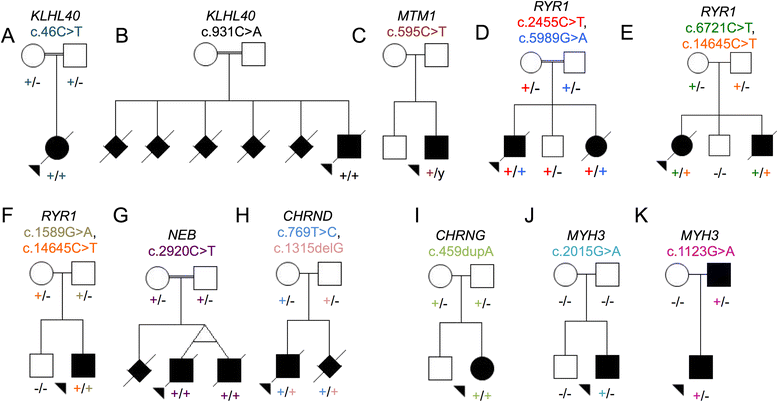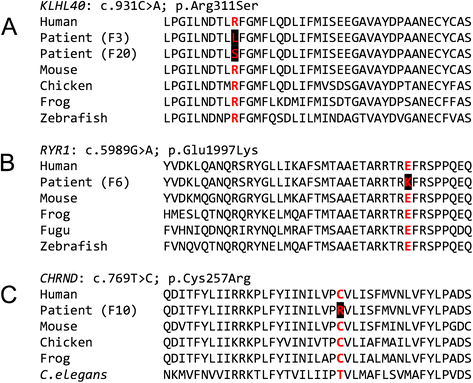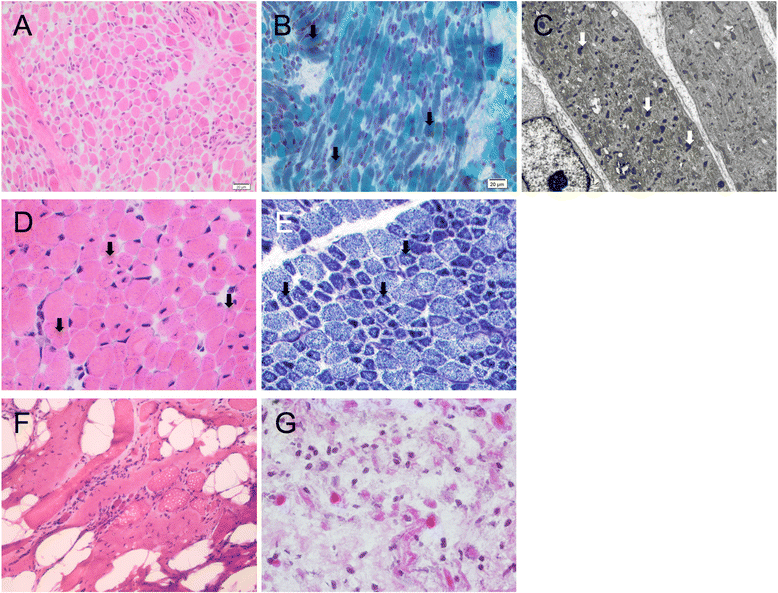Next generation sequencing in a large cohort of patients presenting with neuromuscular disease before or at birth
- PMID: 26578207
- PMCID: PMC4650299
- DOI: 10.1186/s13023-015-0364-0
Next generation sequencing in a large cohort of patients presenting with neuromuscular disease before or at birth
Abstract
Background: Fetal akinesia/hypokinesia, arthrogryposis and severe congenital myopathies are heterogeneous conditions usually presenting before or at birth. Although numerous causative genes have been identified for each of these disease groups, in many cases a specific genetic diagnosis remains elusive. Due to the emergence of next generation sequencing, virtually the entire coding region of an individual's DNA can now be analysed through "whole" exome sequencing, enabling almost all known and novel disease genes to be investigated for disorders such as these.
Methods: Genomic DNA samples from 45 patients with fetal akinesia/hypokinesia, arthrogryposis or severe congenital myopathies from 38 unrelated families were subjected to next generation sequencing. Clinical features and diagnoses for each patient were supplied by referring clinicians. Genomic DNA was used for either whole exome sequencing or a custom-designed neuromuscular sub-exomic supercapture array containing 277 genes responsible for various neuromuscular diseases. Candidate disease-causing variants were investigated and confirmed using Sanger sequencing. Some of the cases within this cohort study have been published previously as separate studies.
Results: A conclusive genetic diagnosis was achieved for 18 of the 38 families. Within this cohort, mutations were found in eight previously known neuromuscular disease genes (CHRND, CHNRG, ECEL1, GBE1, MTM1, MYH3, NEB and RYR1) and four novel neuromuscular disease genes were identified and have been published as separate reports (GPR126, KLHL40, KLHL41 and SPEG). In addition, novel mutations were identified in CHRND, KLHL40, NEB and RYR1. Autosomal dominant, autosomal recessive, X-linked, and de novo modes of inheritance were observed.
Conclusions: By using next generation sequencing on a cohort of 38 unrelated families with fetal akinesia/hypokinesia, arthrogryposis, or severe congenital myopathy we therefore obtained a genetic diagnosis for 47% of families. This study highlights the power and capacity of next generation sequencing (i) to determine the aetiology of genetically heterogeneous neuromuscular diseases, (ii) to identify novel disease genes in small pedigrees or isolated cases and (iii) to refine the interplay between genetic diagnosis and clinical evaluation and management.
Figures




References
Publication types
MeSH terms
Grants and funding
LinkOut - more resources
Full Text Sources
Other Literature Sources
Medical
Molecular Biology Databases
Miscellaneous

